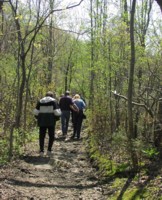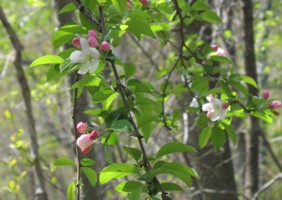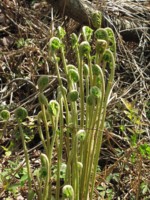 |
||
 |
 |
 |
The
Friends of Salem Woods
also
including Forest River Conservation Area
|
The
Friends of Salem Woods |
||||||
A Short History of Salem Woods
(with appreciation to SalemWeb
from whence this was lifted)
(See also this account of woods history with details since acquisition)
By Jeanne Stella
For many centuries prior to its colonization by white settlers, Native American Indians lived in the area we now know as Salem Woods.
Artifacts have been found, and three sites in the woods are recognized by the Massachusetts Historical Commission.
In colonial times the area was held as "common lands" for the pasturage of livestock. A stone wall built prior to 1800 enclosed the pasture and kept the animals from straying. Much of this old wall remains, surrounding both woods and golf course.
The woods were then known as the Great Pastures. "Rights" to the land were held by several very prominent Salem families. Jonathan Gardner, one of the leading merchants who gave Salem its fame in the 18th century, owned rights in the Great Pastures, as did Habakkuk Gardner, a master mariner, and Samuel Gardner, another leading Salem merchant.
Another member of the Gardner family was John Gardner, the sole son of Capt. John and Elizabeth (Putnam) Gardner. He married Elizabeth Pickering, daughter of Col. Timothy and Mary Wingate Pickering. In 1812, being then widowed, Elizabeth Gardner purchased "six-eighths of the certain lands in the Great Pastures," sold the property, then bought it back for one dollar!
The Pickman family also owned many rights in the Great Pasture Corp.
Associated with the Great Pastures was a swamp, today known as Thompson's Meadow, but then know as Great Swamp. This land was owned by Judge Samuel Putnam. During the War of 1812 when the cost of wood was high, Great Swamp became a major source of fuel for the townspeople. The judge permitted the taking of submerged tree roots and trunks from his swamp as this provided needed drainage.
In 1855, the proprietors of the land organized as a corporation -- the Great Pasture Co. Caleb Foote was president.
In the fall of 1906, the city of Salem purchased this land from the Great Pasture Co. to use as a park. Shortly thereafter, it was given the name "Highland Park." At that time there was significantly more acreage. Since the date of purchase, however, several portions of the land have been transferred for other use. The largest of these transfers took place in 1932 when land was taken by legislation for the municipal golf course.
Upon the highest hill, formerly called Monument Hill, can still be seen the remnants of the metal anchorage where an observation tower was set into the ledge. This tower, which later became the Boy Scout Tower, was purchased from Franklin Forestry Co. for $110 and was used to assist the park patrol. It additionally provided a landmark for those walking through the woods.
Older city documents speak of the "Indian trail" or "Ancient Trail" and tell how this was marked with arrows and kept clear of brush. In the record for 1929, the Park Department noted that the Boy Scouts had offered to clear the trails and do other work to benefit the park.
In 1933, a new trail was established from the parking area to the tower. Then, in 1976, Salem High School students, under the direction of teacher Julia Yoshida and Peabody Museum curator Sally Ingalls, created a nature trail in the shape of a loop. This was completed with a map and self-guided trail booklet that explained the trail for the interested public.
Throughout the years, the continued existence of the woods has been periodically threatened by developers and those who wish to expand the current nine-hole golf course into an 18-hole course. To advocate for our beloved woods, in 1991 the Friends of Salem Woods was formed -- to preserve "as is, for all time" these woods, the Forest River estuary, uplands and Thompson's Meadow. We are "a corps of volunteers" who protect and maintain the woods and who encourage passive use of the woods for "education and recreation." We form partnerships with interested parties, public and private.
Salem Woods (Highland Park) has served us for many years -- historically, ecologically and recreationally. It has been used by birders, naturalists, Boy Scouts, school groups, photographers, hikers and bikers. It has been visited and written about by dignitaries such as the Rev. William Bentley and 19th-century poet Jones Very, a friend of Hawthorne and Emerson's who used the woods as a place in which to seek inspiration.
Many families come here for picnics. As hiking becomes increasingly popular as a means of exercise, people hike through the woods at all times of the year. The woods also serve as a field laboratory for science classes from the elementary school to college level.
Considering all of these factors, I am convinced that we must ensure protection of our woods for future generations. A Salem News article dated, Sept. 18, 1906, states: "The land for park purposes is to be actually purchased by the park commissioners under the park act, and this having once been done, it must be used for park purposes and no other purpose."
|
Home | Map | Photo Galleries | Documents/Lists | About Us/Contacts ©2003 Friends of Salem Woods - Web site
maintained and donated by Richard Frenkel
|